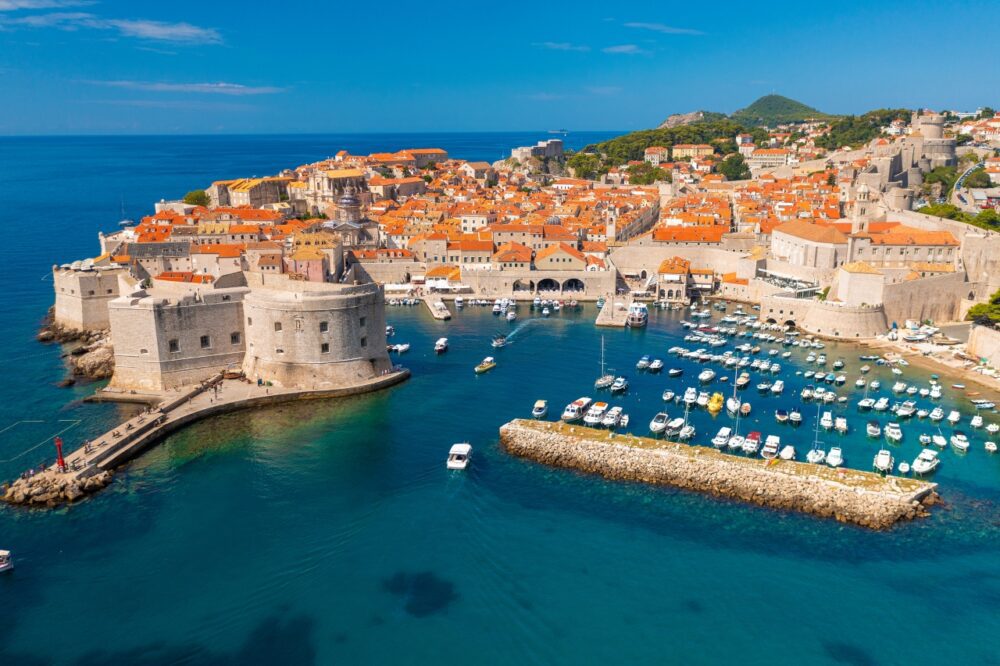
Is Dubrovnik worth visiting? Without hesitation, I’d say yes. The first time I arrived in Dubrovnik, I was immediately captivated by its stunning beauty. Walking along the ancient city walls, with the shimmering Adriatic Sea on one side and the terracotta rooftops on the other, felt like stepping into a postcard. Add in the dramatic sunsets and a bit of Game of Thrones magic, and it’s clear why Dubrovnik is called the “Pearl of the Adriatic.”
Located on Croatia’s southern coast, Dubrovnik is a city steeped in history and surrounded by natural beauty. Its UNESCO-listed Old Town, with its marble streets and medieval charm, is one of Europe’s most iconic destinations. But Dubrovnik is more than just a pretty face—it’s a gateway to stunning beaches, crystal-clear waters, and some of the best seafood you’ll ever taste. Whether you’re exploring the island of Lokrum, kayaking along the coastline, or simply soaking up the sun at Banje Beach, Dubrovnik offers something for everyone. But is Dubrovnik worth visiting for you?
In this blog post, we’ll explore the top 10 reasons why Dubrovnik should be on your travel list. From its historical treasures to practical travel tips, we’ll show you why this Croatian gem deserves a spot on your itinerary. Keep reading, and you’ll soon see why Dubrovnik has captured the hearts of travellers around the world.
Table of Contents
Pros – Reasons You Should Visit Dubrovnik
1. A Breathtakingly Beautiful Old Town with Medieval Charm
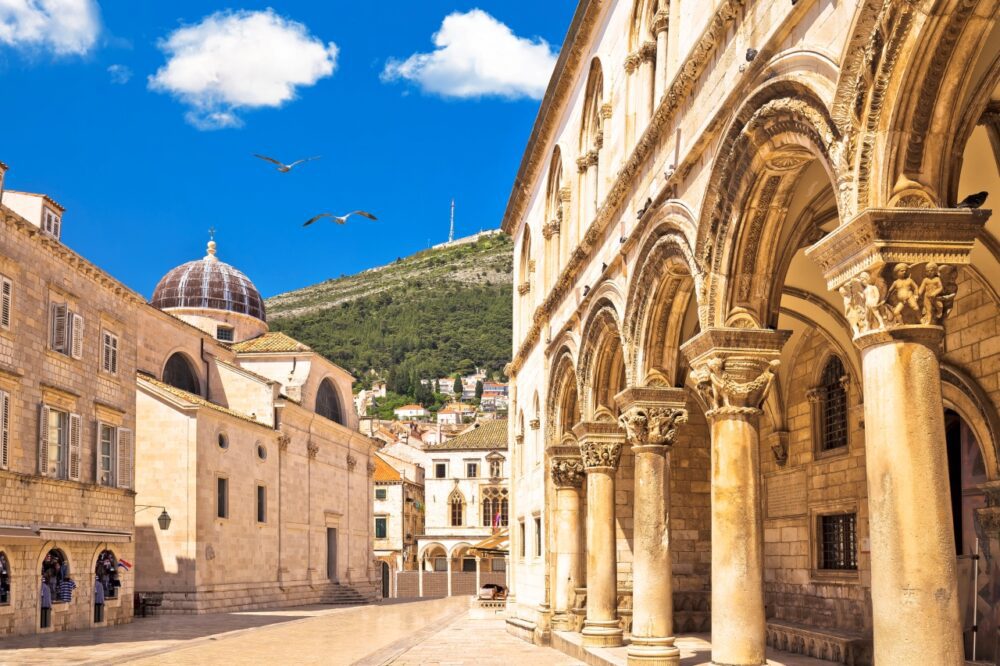
Dubrovnik’s Old Town is one of the most stunningly preserved medieval cities in Europe. Enclosed within its famous stone walls, this historic centre is a maze of cobbled streets, elegant squares, and grand palaces. The city’s architecture, influenced by Gothic, Renaissance, and Baroque styles, makes it feel like a place frozen in time. Unlike some historic towns that have lost their authenticity to modern developments, Dubrovnik has carefully maintained its heritage, creating an atmosphere that feels both immersive and magical.
One of the best ways to take in the Old Town’s beauty is by walking along the City Walls, which stretch for nearly two kilometres around the historic centre. The panoramic views from the top are spectacular, offering a sweeping outlook over the terracotta rooftops, the shimmering Adriatic Sea, and the distant mountains. I spent nearly two hours slowly making my way along the walls, stopping frequently to take in different vantage points. Exploring the streets below was just as captivating, with highlights like Stradun, the city’s main thoroughfare, lined with polished limestone buildings that seem to glow in the sunlight. Whether you’re visiting in the early morning, before the crowds arrive, or at sunset, when the warm light casts a golden hue over the stone, the Old Town is nothing short of breathtaking.
2. Stunning Coastal Scenery and Crystal-Clear Waters
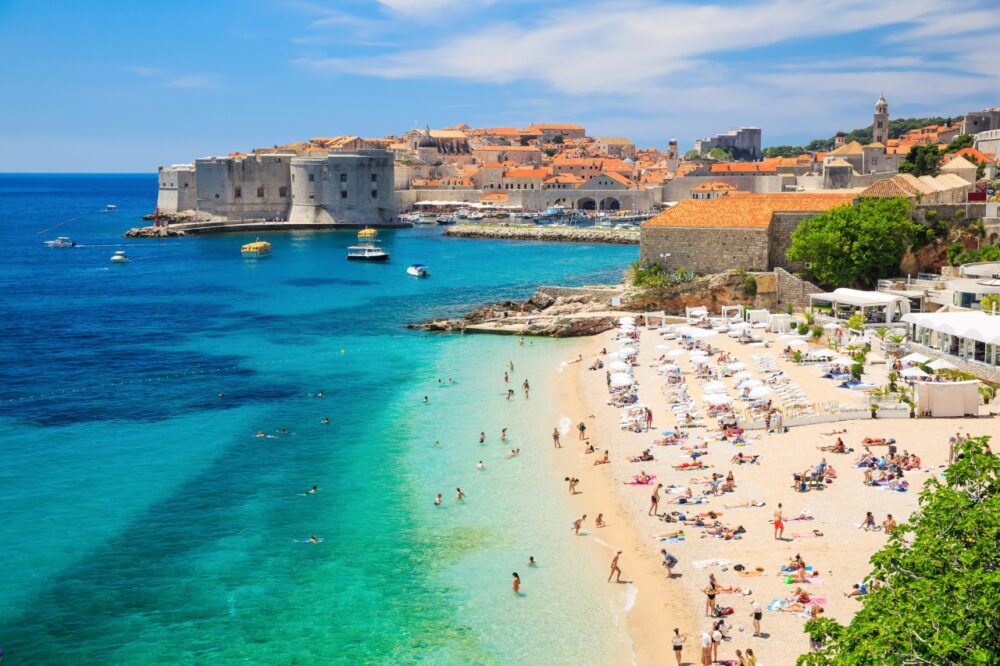
Dubrovnik is not only a historic gem but also a destination blessed with some of the most stunning coastal scenery in the Mediterranean. The city sits right on the Adriatic Sea, where the water is an intense shade of blue and strikingly clear. Along the coastline, steep cliffs drop into the sea, small rocky coves hide quiet swimming spots, and nearby islands offer even more natural beauty to explore.
One of my favourite experiences was taking a swim just outside the city walls at Buza Beach, a unique cliffside swimming spot with ladders leading straight into the sea. The combination of warm sun, refreshing water, and unbeatable views made it one of the most memorable swims I’ve ever had. Another must-do is a boat trip to the Elaphiti Islands, a small archipelago just off the coast. I took a day tour to Lopud, where I found sandy beaches (a rarity in Croatia), pine-shaded walking trails, and hidden caves to explore by kayak. Whether you prefer sunbathing, snorkelling, or simply admiring the coastal landscapes, Dubrovnik’s seaside setting is truly spectacular.
3. Rich History and Fascinating Cultural Heritage
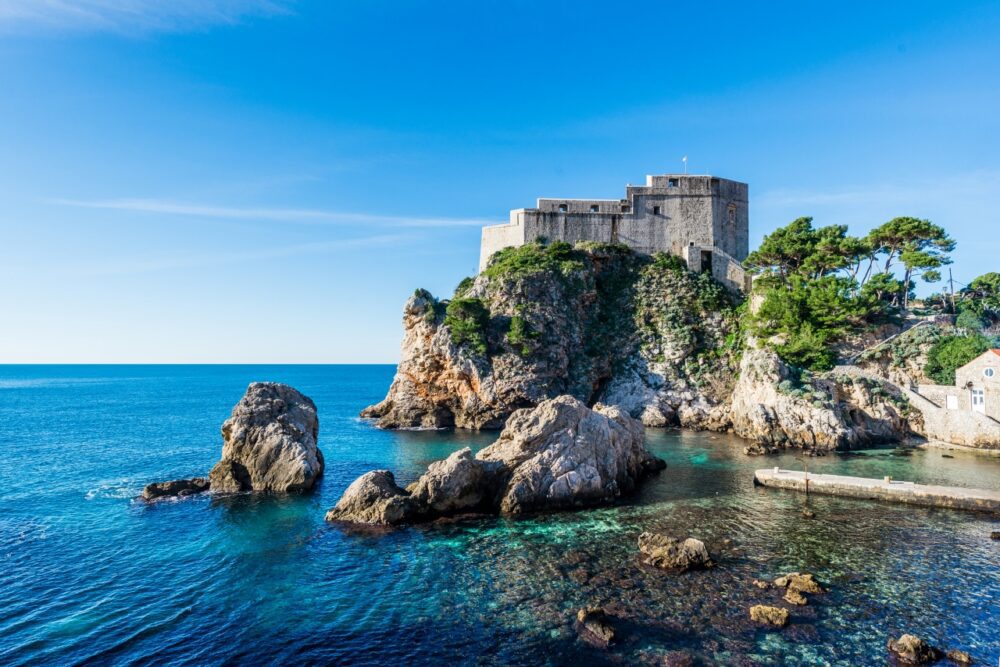
Dubrovnik has a long and fascinating history, having once been a powerful maritime republic that rivalled Venice. As you explore the city, you’ll find traces of its past everywhere, from grand fortresses to elegant palaces and ancient churches. Unlike some historic cities where museums are the only way to experience the past, Dubrovnik’s history is woven into its streets, making every walk through the Old Town feel like a step back in time.
I spent an afternoon at Lovrijenac Fortress, an imposing structure perched on a rocky cliff just outside the city walls. The fortress played a crucial role in protecting Dubrovnik from invaders, and standing on its battlements, looking down at the waves crashing below, I could almost imagine the battles that took place here centuries ago. Another highlight was Rector’s Palace, once the seat of the Republic of Ragusa’s government. Its elegant courtyards, ornate staircases, and period furnishings offered a glimpse into the lives of Dubrovnik’s former rulers. Even the city’s churches, such as Dubrovnik Cathedral and St. Blaise’s Church, tell stories of resilience, having been rebuilt after earthquakes and wars.
4. Incredible Local Cuisine with Fresh Seafood and Mediterranean Flavours
Dubrovnik’s cuisine is a mix of Mediterranean and Dalmatian influences, with fresh seafood, high-quality olive oil, and aromatic herbs playing a central role. Whether you’re dining at a fine restaurant overlooking the sea or enjoying a casual meal at a family-run konoba (traditional tavern), the food is always a highlight.
One of the best meals I had was black risotto, a rich and flavourful dish made with squid ink, garlic, and white wine. The texture was velvety, and the deep umami taste was unlike anything I had tried before. Another local speciality I loved was peka, a slow-cooked dish of meat or seafood prepared under a metal lid covered in hot coals, giving it an incredibly tender texture and smoky flavour. For something simple but delicious, I tried grilled octopus, which was perfectly charred on the outside yet juicy and tender inside. Accompanied by a glass of local Plavac Mali red wine and a sea view, every meal in Dubrovnik felt like a special occasion.
5. A Fantastic Base for Exploring Nearby Islands and Towns
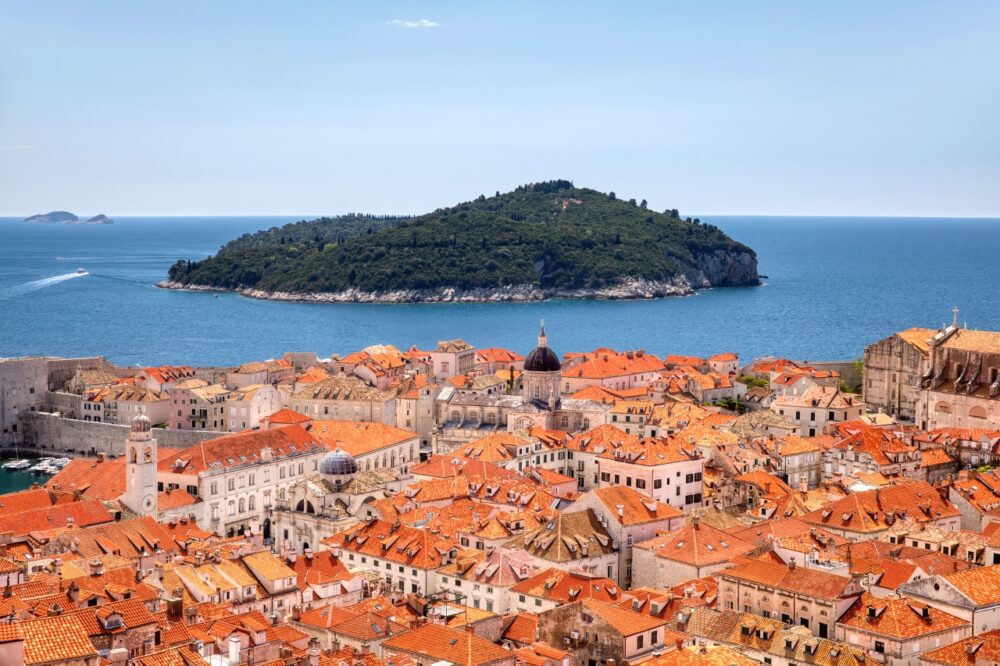
While Dubrovnik itself has plenty to offer, it’s also an excellent base for exploring other parts of the Adriatic coast. There are numerous islands, beaches, and historic towns nearby, all easily accessible by ferry or short boat trips.
One of the best day trips I took was to Lokrum Island, just a 15-minute ferry ride from the Old Town. The island is a peaceful escape from the crowds, with botanical gardens, rocky swimming spots, and even a small saltwater lake known as the Dead Sea. Another great excursion was to the medieval town of Cavtat, a charming coastal village with scenic promenades, quiet beaches, and a laid-back atmosphere. If you have more time, visiting Montenegro is also possible—Kotor and Perast, with their dramatic fjord-like bay, are just a couple of hours away.
6. A Unique Blend of Relaxation and Adventure
Dubrovnik is one of those destinations that offers something for everyone. If you want to relax, you can spend your days lounging by the sea, sipping coffee in the Old Town, or enjoying long, leisurely meals with stunning views. If you’re after adventure, there are plenty of activities to keep you busy, from sea kayaking and snorkelling to hiking and island-hopping.
One of the most exciting activities I tried was kayaking around the city walls, which provided an entirely new perspective of Dubrovnik. Paddling along the coast, past hidden caves and towering cliffs, was both exhilarating and peaceful at the same time. For those who prefer land-based adventures, the hike up to Mount Srđ offers one of the best views in the region. I opted for the cable car up and hiked down, taking in panoramic vistas of the Old Town and the surrounding islands as I descended.
7. A Beautiful Destination All Year Round
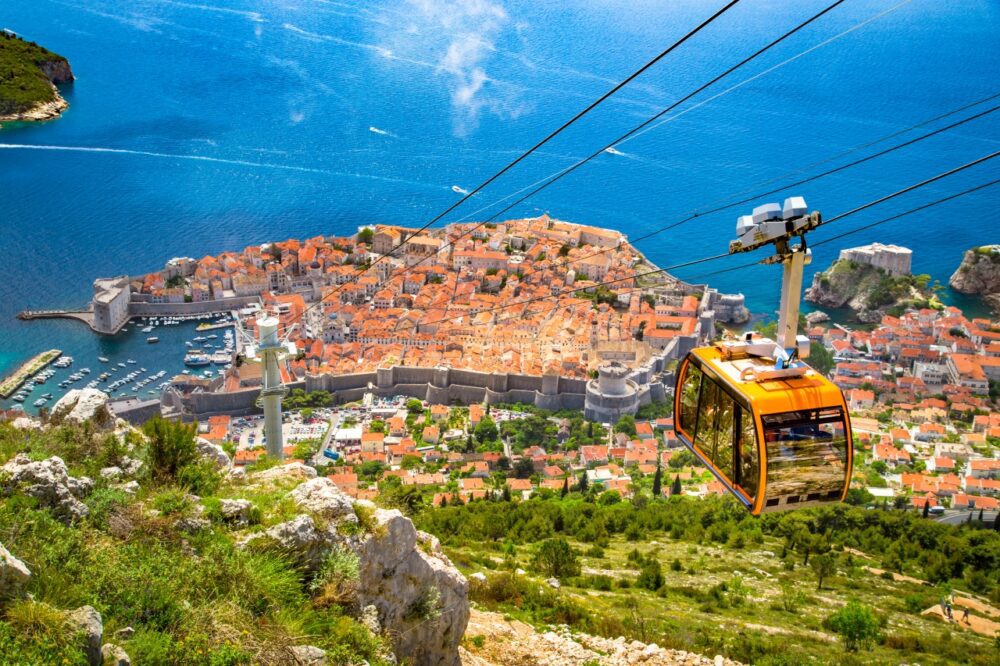
Dubrovnik is most popular in summer, but it’s a fantastic destination in any season. Spring and autumn are ideal times to visit, with warm temperatures, fewer crowds, and lower prices. Even winter has its charm, especially for those who want to explore the city’s history and culture without the summer rush.
I visited in late September, and the experience was perfect. The sea was still warm enough for swimming, the weather was pleasant, and the Old Town was far less crowded than in peak summer. Walking along the city walls without jostling through crowds made a huge difference, allowing me to fully appreciate the beauty of Dubrovnik at my own pace. Winter, while quieter, has its own appeal, with Christmas markets, festive lights, and a more relaxed local atmosphere.
Cons – Things to Consider When Visiting Dubrovnik
1. The Crowds Can Be Overwhelming, Especially in Peak Season
Dubrovnik is one of the most popular tourist destinations in Europe, and during the summer months, the number of visitors can be overwhelming. The Old Town, with its narrow streets and historic charm, attracts thousands of people daily, especially when cruise ships dock in the port. The sheer volume of tourists can make it difficult to explore the city at a relaxed pace, with long queues for attractions, packed cafés, and busy walkways that sometimes feel more like bottlenecks than pedestrian streets.
I visited Dubrovnik in July, and by mid-morning, the Old Town was completely packed. Stradun, the city’s main street, was filled with large tour groups, making it almost impossible to stroll without being caught in slow-moving crowds. Climbing the city walls was an incredible experience, but with so many people stopping for photos, it often felt like a slow shuffle rather than a leisurely walk. Even finding a quiet spot for a coffee was a challenge, as most of the outdoor seating in the main squares was taken. If you want to avoid the worst of the crowds, visiting early in the morning or in the shoulder seasons—spring or autumn—is a much better option.
2. Dubrovnik is One of the Most Expensive Cities in Croatia
While Croatia is often seen as an affordable travel destination, Dubrovnik is an exception. Prices in the Old Town, especially for food, drinks, and accommodation, are significantly higher than in other Croatian cities like Split or Zadar. As a top tourist hotspot, many restaurants and hotels cater to international visitors, meaning prices can be comparable to those in Western Europe. Eating out in the historic centre or staying in a well-located hotel often comes at a premium, and even basic items like bottled water or snacks can cost more than expected.
I noticed the high prices almost immediately when searching for accommodation. Even modest guesthouses within walking distance of the Old Town were charging rates that rivalled major European capitals. When it came to dining, I found that a simple seafood dish and a glass of wine in the city centre could cost nearly double what I had paid for a similar meal in Split just a few days earlier. While it’s still possible to find budget-friendly options—such as eating in local bakeries or dining outside the Old Town—Dubrovnik is not the best choice for travellers on a tight budget. If you want to experience the city without overspending, planning ahead and being selective about where you eat and stay is essential.
3. The Summer Heat Can Be Exhausting
Dubrovnik’s Mediterranean climate means summers are hot, with temperatures regularly exceeding 30°C. The combination of heat, humidity, and the city’s stone architecture, which absorbs and radiates warmth, can make sightseeing uncomfortable during the peak of the day. The Old Town has little shade, and climbing the city walls or exploring the fortresses in the midday sun can quickly become exhausting, especially for those not used to high temperatures.
I made the mistake of visiting Lovrijenac Fortress in the early afternoon, and within minutes, I was drenched in sweat, desperately looking for any patch of shade. The heat reflected off the stone walls, making it feel even hotter than the actual temperature. Walking the city walls in direct sunlight was another challenge, as there were few places to stop and cool down. The best way to deal with Dubrovnik’s summer heat is to plan activities for the early morning or late afternoon when the temperatures are more manageable. Taking breaks at shaded cafés, staying hydrated, and wearing light, breathable clothing also helps, but if you’re sensitive to heat, visiting outside the peak summer months is a much better option.
4. Limited Nightlife Compared to Other Croatian Cities
While Dubrovnik has a lively restaurant scene and a few stylish cocktail bars, its nightlife is relatively limited compared to other Croatian destinations like Split or Hvar. The city attracts a mix of families, older travellers, and history enthusiasts, meaning the focus is more on sightseeing and dining rather than late-night partying. While there are some bars and a couple of clubs, the nightlife is not as energetic or varied as in other coastal cities, and many places close earlier than you might expect.
One evening, I set out to find a lively bar for drinks, expecting Dubrovnik to have the same buzzing nightlife I had experienced in Split. While there were some atmospheric spots, like Buza Bar, which is perched on the cliffs with stunning sea views, the overall nightlife felt more subdued. Many bars closed by midnight, and the few clubs that did exist had a smaller crowd than I expected. While Dubrovnik is perfect for relaxed evenings with cocktails by the sea, those looking for an exciting nightlife scene may be disappointed. If nightlife is a priority, it’s worth considering other Croatian destinations that offer a more vibrant party atmosphere.
When to Visit Dubrovnik
The best time to visit Dubrovnik is during late spring (May to early June) or early autumn (September to October), when the weather is warm but not scorching, and the summer crowds have thinned. These shoulder seasons offer a chance to enjoy Dubrovnik’s stunning Old Town, historic walls, and crystal-clear beaches with more space and comfort. Summer (July and August) is peak season, with hot temperatures, bustling crowds, and higher prices, though it’s also when the city is at its liveliest, with the annual Dubrovnik Summer Festival bringing open-air concerts and cultural events. For a quieter experience, April and November offer mild weather and a more relaxed pace, though swimming might be chilly.
How to Get to Dubrovnik
Dubrovnik Airport (DBV), located about 20 kilometres from the city centre, serves as the main gateway to Dubrovnik and is well-connected to Europe, with flights from Croatia Airlines, British Airways, Lufthansa, and easyJet. From the airport, an affordable shuttle bus service runs to Pile Gate near the Old Town, taking around 30 minutes. Taxis and ride-hailing services are also available but pricier. Dubrovnik isn’t connected by train to the rest of Croatia, so buses are the main alternative if you’re arriving overland, with regular services from Split, Zagreb, and Mostar.
Where to Stay in Dubrovnik
Dubrovnik has a range of neighbourhoods that cater to different travel styles and budgets:
- Luxury: Ploče – Just outside the Old Town with panoramic views of the Adriatic, Ploče is home to luxury hotels like Hotel Excelsior and Villa Dubrovnik, both offering top-notch service and easy access to historic sites.
- Mid-range: Lapad – Known for its beaches, cafes, and scenic promenade, Lapad is a relaxed area that’s a short bus ride from the Old Town. Try Hotel Kompas or Hotel Lapad for comfort and amenities at a reasonable rate.
- Budget: Gruž – Near the port, Gruž is a more affordable area with a local feel and good connections to the Old Town by bus. Berkeley Hotel & Day Spa and Guest House Letizia offer budget-friendly stays with easy access to ferries for island hopping.
Getting Around Dubrovnik
Dubrovnik’s compact Old Town is best explored on foot, with its narrow streets, staircases, and historic charm making walking the ideal way to see the sights. For longer journeys, Libertas Dubrovnik buses connect the city’s main areas, including Lapad and Gruž, with the Old Town, and tickets are affordable if purchased at kiosks. Dubrovnik doesn’t have a bike-sharing system, but e-scooter rentals are becoming popular, providing an alternative way to explore. For scenic views, take the Dubrovnik Cable Car up Mount Srđ to enjoy panoramic vistas over the city and coast—a must-do for photographers.
How Long to Spend in Dubrovnik
Three days is ideal for Dubrovnik, giving you enough time to explore the Old Town and walk the city walls, take a day trip to the Elafiti Islands or nearby Lokrum Island, and sample local cuisine at a relaxed pace. With more time, you can delve into Dubrovnik’s museums, such as the Rector’s Palace, or enjoy a beach day in Lapad. If you’re up for a scenic day trip, consider adding an extra day to visit Kotor in Montenegro or the charming Pelješac Peninsula for wine-tasting and coastal views.
Conclusion
So, is Dubrovnik worth visiting? Absolutely! With its breathtaking Old Town, scenic coastline, and rich history, Dubrovnik is a destination that feels like a dream come to life. While the city can be crowded and pricey during peak summer, the experiences it offers—like walking the ancient walls or enjoying fresh seafood with a sea view—are truly unforgettable. If you’re ready to immerse yourself in Croatia’s coastal splendour, start planning your trip to Dubrovnik today—it’s a journey you’ll cherish forever.
